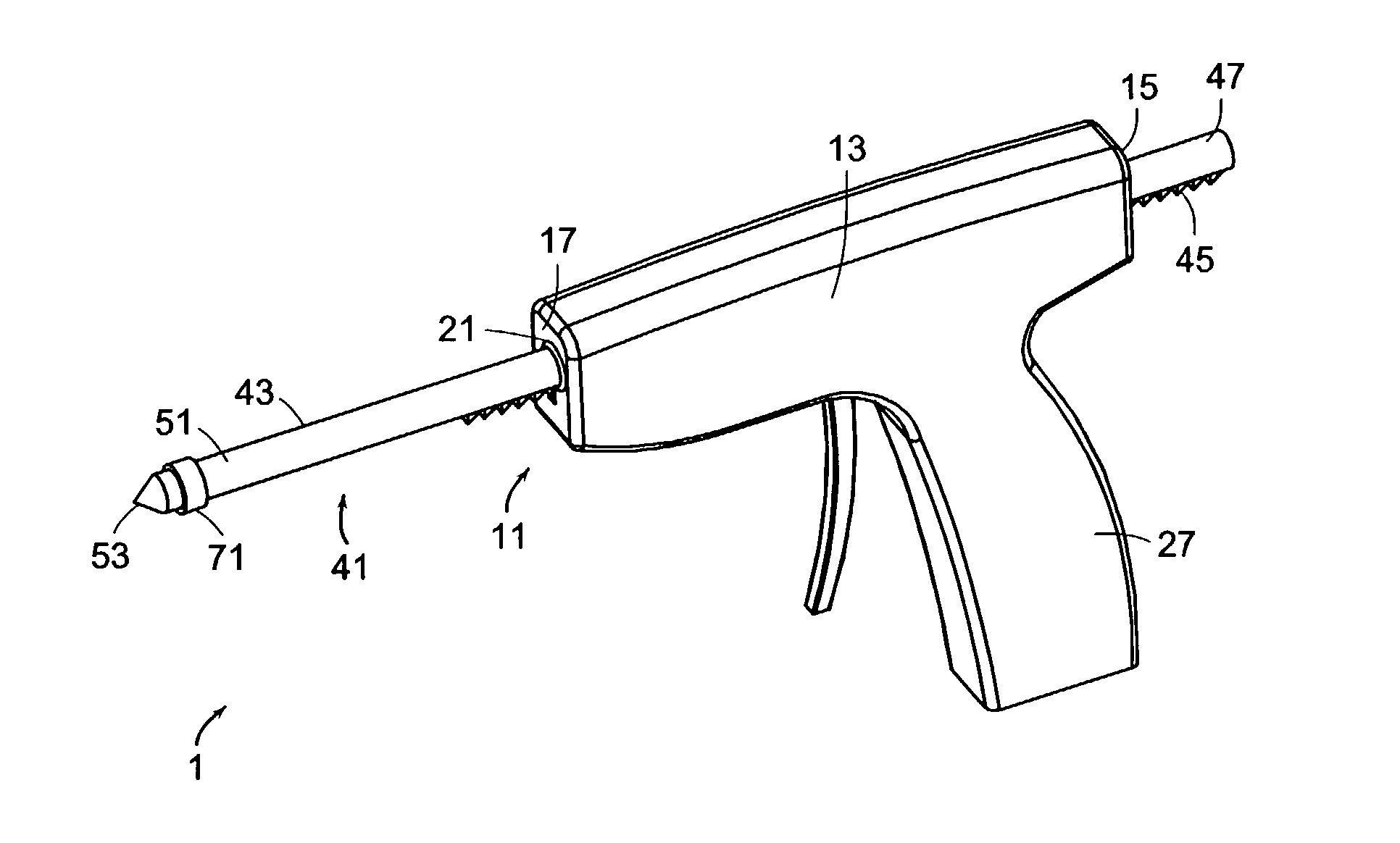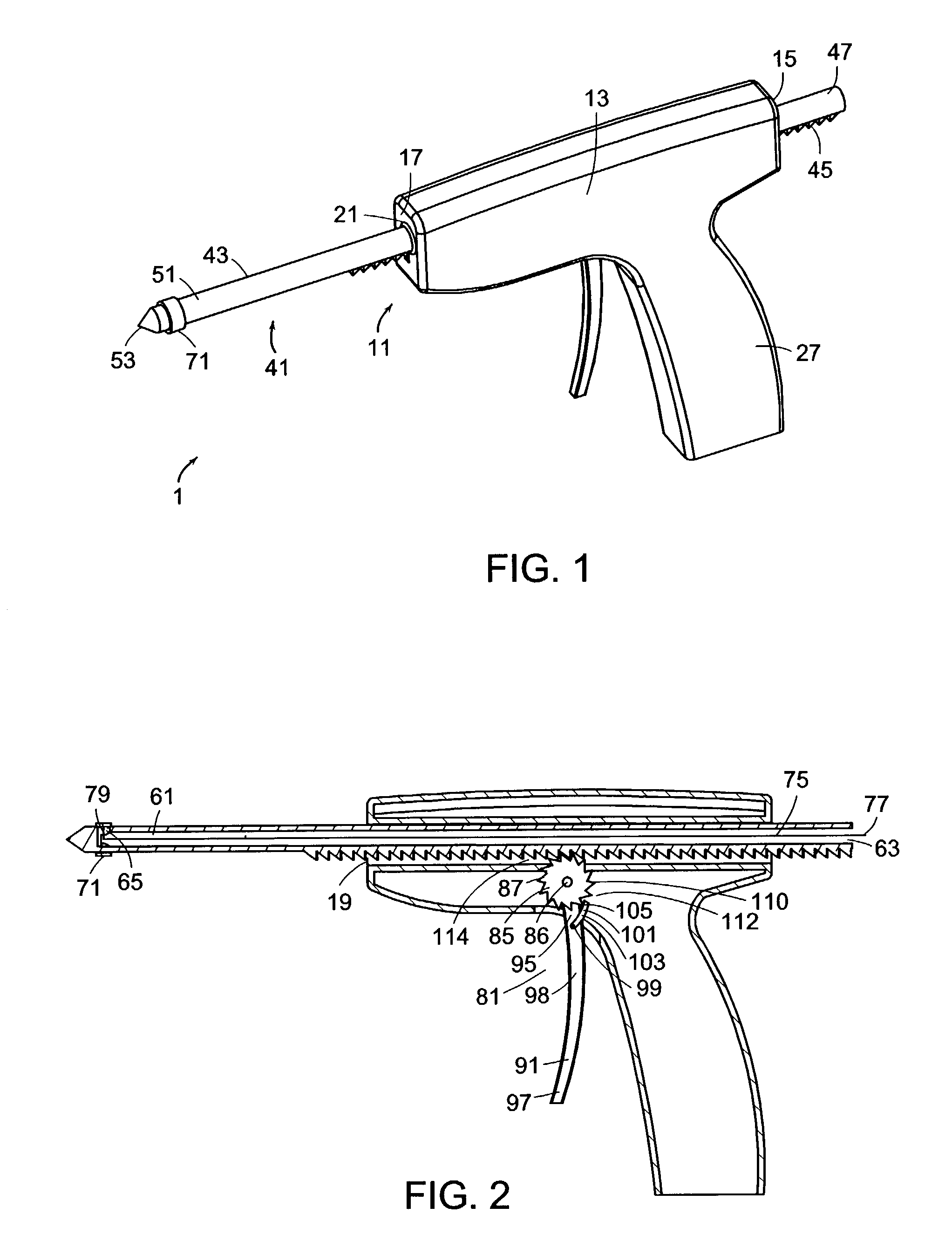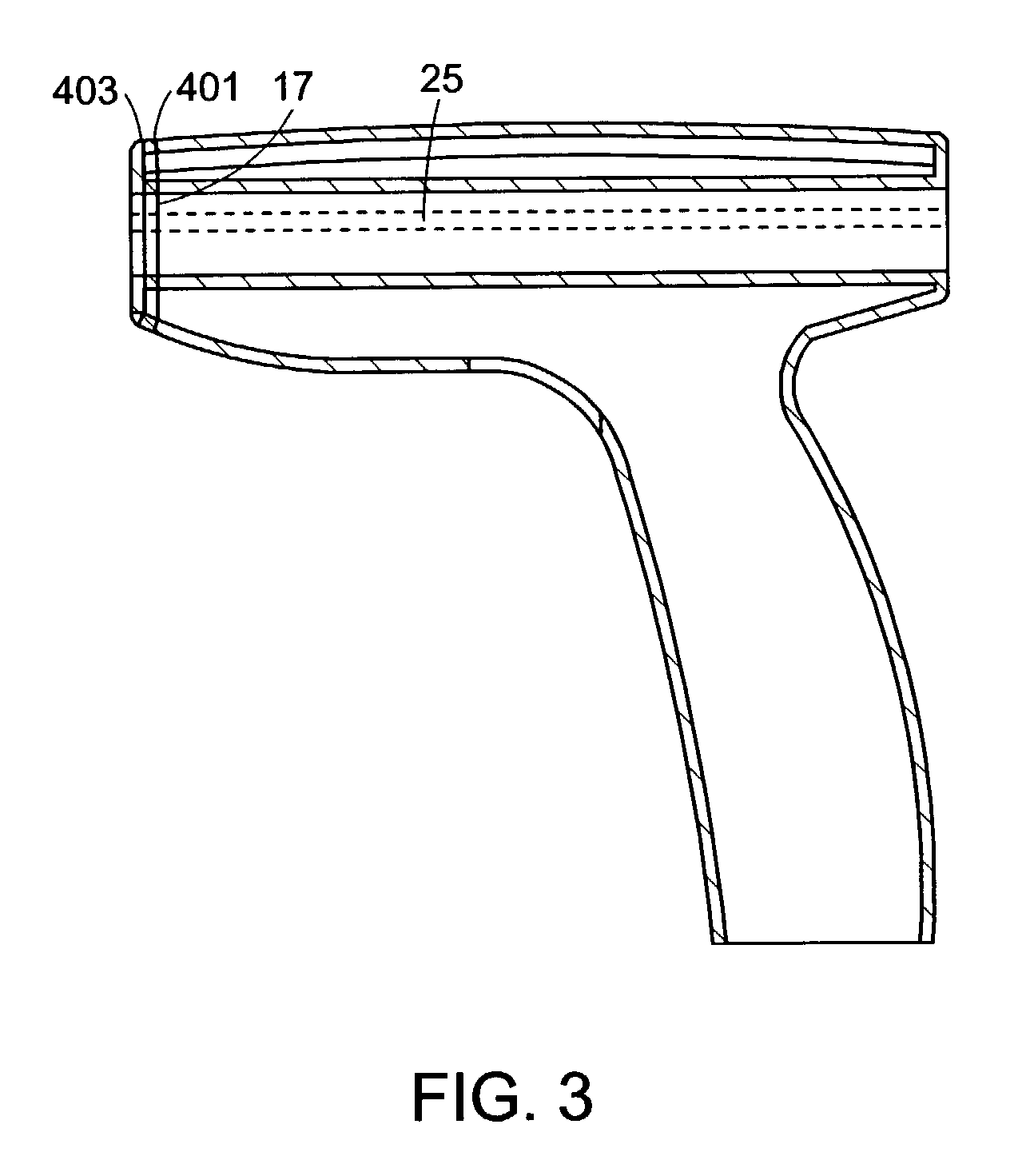Device for advancing a functional element through tissue
a functional element and tissue technology, applied in the direction of prosthesis, osteosynthesis devices, surgical forceps, etc., can solve the problems of inconvenient positioning of the probe, no mechanical means disclosed in these techniques, so as to improve the directional control of the device
- Summary
- Abstract
- Description
- Claims
- Application Information
AI Technical Summary
Benefits of technology
Problems solved by technology
Method used
Image
Examples
example
[0296]First, the patient is positioned in a prone position. The skin is then prepared with an iodine scrub. The skin entry is then planned and a fluoroscopic picture taken to verify the level of entry.
[0297]Next, the clinician palpates the area, locates the device and sets the angle of entry.
[0298]In preferred embodiments of using the present invention, referring to FIGS. 1-3, the patch disposed on the proximal face of the housing is removed, thereby exposing an adhesive. The device is placed on the patient's skin above the spine at the target area and the adhesive is pressed onto the skin.
[0299]Next, the clinician grasps device and squeezes the lever and grip together. This actuation causes ratchet wheel fixedly attached to the lever to move counterclockwise (i.e., in the direction of arrow B). The second set of teeth disposed on the wheel also move in the counterclockwise direction, thereby causing the first plurality of teeth in engagement therewith (and therefor the entire probe...
PUM
 Login to View More
Login to View More Abstract
Description
Claims
Application Information
 Login to View More
Login to View More - R&D
- Intellectual Property
- Life Sciences
- Materials
- Tech Scout
- Unparalleled Data Quality
- Higher Quality Content
- 60% Fewer Hallucinations
Browse by: Latest US Patents, China's latest patents, Technical Efficacy Thesaurus, Application Domain, Technology Topic, Popular Technical Reports.
© 2025 PatSnap. All rights reserved.Legal|Privacy policy|Modern Slavery Act Transparency Statement|Sitemap|About US| Contact US: help@patsnap.com



